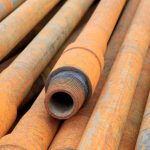Corrosion & Nitrogen Inerting: What You Need to Know
Corrosion can have a profound and lasting impact on the lifespan of your fire protection system, leading to increased maintenance costs and potentially compromising its ability to effectively suppress fires. The central question is, “how quickly does corrosion take to destroy my fire protection system?” There are many factors that affect the corrosion rate, and…
